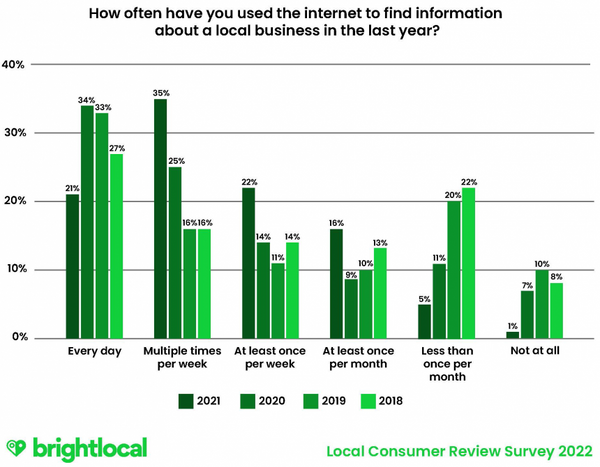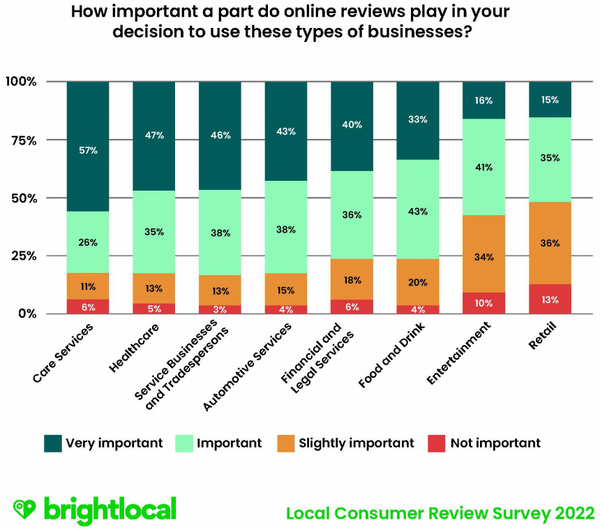Think of any B2C platform for e-commerce, be it Shopee, Lazada or Amazon. The main draw for customers is accessibility and convenience. Having hundreds or thousands of suppliers that can fulfill any of your consumer needs has completely changed our purchasing behaviours. Today, we can easy order a lightbulb, printer ink or socks on demand. The options are getting larger and the purchasing experience is becoming more efficient.
Imagine if all of Lazada’s goods were housed in a giant warehouse. No one in their right mind would be interested in traversing the countless aisles to find what they want and from which supplier. Technology has created an opportunity for doing one thing extremely well: sorting large amounts of information in an extremely convenient manner. It takes just a few clicks to find what you need and this can make the consumer experience a lot smoother and efficient.
However, with all this choice that is now available in the palm of my hand, what makes me sort or choose one product over another? Price may be the first criterion but studies indicate that social proof or customer feedback is the actual motivator of consumer choice. When we have thousands of options, we need an intrinsic filter to find the final choice. Ratings, feedback and customer testimonial on the supplier is the defining filter of our age and it impacts every industry whether it be B2C products or bespoke B2B learning and development (L&D).
What is social proof?
According to HubSpot, social proof is the idea that consumers will adapt their behaviour according to what other people are doing. This can take many forms from expert stamp of approvals, endorsements from influencers or celebrities, user testimonials, business credentials, social media shares and wisdom from your trusted circle. Using a third party testimonial allows us to gain an unbiased view of the product or service and in today’s world of endless choice, it can become a valuable criterion for sorting and filtering options.
In traditional commoditised products, this allows people to discern product and supplier quality. It can also provide a valuable insight to the values of the suppliers and consumers tend to gravitate to organisations that align to their personal values. Price of products might even become a secondary consideration as consumers are potentially more willing to pay a higher price in return for great supplier quality.
Some key statistics from BrightLocal on social proof:
- More consumers use Google to evaluate local businesses than ever before. In 2021, 81% did, but the year before that, just 63% did.
- In 2021, just 3% said they would consider using a business with an average star rating of two or fewer stars. That's down from 14% in 2020.
- More consumers are reading online reviews than ever before. In 2021, 77% 'always' or 'regularly' read them when browsing for local businesses (up from 60% in 2020).
Even in bespoke services driven businesses, online reviews are playing a bigger role than ever. This is logical as the value that customers get in these types of business is largely driven by the customer-supplier relationship. If you think about the airlines industry, the choice of who you fly with is often not the bumpiness of the flight (i.e., product quality) but the overall customer interaction. We appreciate the friendly stewardess or the resourcefulness of the airline staff if there is a flight delay.

Is B2B and B2C so different?
My argument is that social proof is a lot more important in the B2B context. We know that the B2C market is flush with social proof and customer testimonials and the main reason is that the total market is potentially a lot larger than most B2B marketplaces. Hence, the need for a filter for customers.
By comparison, B2B businesses tend to work in their specific niches and hence a smaller and more targeted market. The consumer that is purchasing these types of offerings might also be a lot more educated of the potential solutions and therefore the myth that social proof might not be required exists. However, this is often not the case. It is usually the case that for most B2B service businesses, the product that they offer to consumers is not totally distinct and having a distinction factor is required to differentiate the value to the consumer.
If a consumer sees a particular business being lead or supported by key figures in the industry, the assumption could be that the business has more growth potential. As a result, the business with the social proof wins the customer. If you look at the biggest B2B provider in the world, Alibaba is so closely linked to Jack Ma, and that provides a sense of security to consumers.

Social Proof and the L&D industry?
Think of the consumer. Who is the first level consumer in L&D? It often is the L&D Specialist or an L&D assistant VP and they tend to be millennials or from the generation Z. We also are missing the biggest elephant in the room, COVID19. The lockdowns forced another approach to purchasing whether we were buying groceries for the home or L&D corporate solutions for our employees. The shift back to post pandemic work has not totally shifted our purchasing behaviours and the assumption is that it won’t. We are in a post pandemic world.
In Malaysia, we have a unique L&D industry as organisations are mandated by law to contribute 1% of gross salaries to HRD Corp as a means to upskill and retrain employees. It definitely is a positive ambition but in the process the industry has also sprouted over 5,000 L&D providers from small one man operations to larger L&D enterprises with multiple product and solution offerings.
Sifting through L&D options therefore has become a uniquely Malaysian experience as organisations aim to claw back their pre-paid HRD Corp levies. To push this forward, the market needs an easy option for consumers to filter and choose the appropriate solution provider for their organisation’s needs.
Coming back to millennials, the reason why they are difficult to reach is that the classic AIDA – awareness, interest, desire and action model does not work for them. According to adapt, the way millennials consume content in our social media world has driven more of an instant gratification mindset. That implies that they actively avoid data or information if it is irrelevant to their needs. Gen X and Boomers remain receptive to traditional B2B pitches, but millennials live in a world where they want to be marketed to in a much more covert and personalised way.
By creating an avenue for them to understand your business impact and reach, you create a layer of peer level proof that you offer value. The current generation value opinions of their peers over branded advertising. Any L&D organisation should be leveraging their greatest assets which are the participants that attend their session. Using them as a microphone for your organisation is not only becoming the most effective marketing tool in the B2B space, it might be the only credible tool in the future as there is so much noise and misinformation in the digital age.
Social Proof and the Future
When you boil it down, social proof reduces uncertainty. In an age of countless choice and the availability of so much information, social proof reduces the consumer’s uncertainty in taking a specific decision. With so much as stake, it is often the case that we lack the confidence to take a decision internally and naturally that forces us to consider outside validation. Social proof is essentially the digital representation of external validation. What are people like us doing in such a situation? How can we understand the reasoning behind their choices and can that approach be similar to the challenge I face today?
Social proof is a shortcut to reducing uncertainty.
As we get more and more saturated with choices and decisions, social proof will likely be the defining filter in our minds as we sort and categorise options in the living world. The B2C industry is a great analogy for the B2B industry as the person who is purchasing a pair of shoes or an enterprise software is the same. The decision-making process is similar; the difference is whom the decision is taken for.
By understanding the shift in how consumers are choosing their products and services, we need to realise the impact of social proof in the future of B2B services. Gone are the days of the marketing and sales funnel. We now see the impact of the flywheel which we describe in our previous article. The flywheel momentum is really built on the impact of social proof and as L&D solution providers evolve, they need to embrace more transparency in social proof so that it provides them with a competitive edge over their competition.
Dragos Bratasanu, author of The Pursuit of Dreams: Claim Your Power, Follow Your Heart, and Furfill Your Destiny says it best. “The dominant social force that drives our thinking and our actions is the unconscious search and need for social proof”. We could not agree more.

